2022
02.15

What is diabetes
There are 2 reasons for suffering from diabetes: (1) insufficient or lack of insulin secreted by the pancreas; (2) insensitivity of cells to insulin. These reasons will be that glucose is too high to decrease, and all organs will be infiltrated in the hyperglycemia. If this condition persists, it will lead to lesions in various organs of the body, seriously affect the quality of life even death.In addition, diabetes is an irreversible disease. Once diagnosed, it must be treated for life. Therefore, it is strongly recommended that canines in high-risk groups must regularly detect the HbA1c test, which can early diagnose the Pre-Diabetes. After control the glucose, prevent to suffer from diabetes.
High-Risk Groups
There are 7 High-Risk Groups:
|
|

▲These breeds with a higher risk of diabetes
Symptoms of Diabetes
The following figure shows 4 common symptoms of diabetes.
 Polydipsia, Polyuria and Polyphagia
|
 Obvious weight loss |
 Decreased activity, lethargy |
 Hyperglycemia and glycosuria |
Pre-Diabetes
● Between health and diabetes. If glucose is not controlled in normal range, it will develop to diabetes.
● No obvious symptoms, and glucose may be normal. Pre-diabetes ONLY is known through the HbA1c test.
● High-risk groups tend to enter this stage.
Glycated Hemoglobin (HbA1c)
HbA1c is the product that hemoglobin combines with glucose in the blood. Cycle of canine HbA1c, consistent with cycle of canine erythrocytes, is about 100 days. Therefore, HbA1c can accurately reflect the glucose level in 100 days. In addition, it is not affected by factors such as environment, emotion and physiology. HbA1c can easily diagnose canines suffered from pre-diabetes and diabetes. (More articles related to diabetic dog evaluation, please refer to "Relationship between HbA1c, Fructosamine and Clinical Assessment of Glycemic Control in Dogs")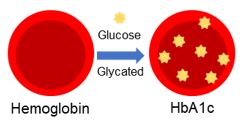
Comparison of Diagnostic Tools
| Glucose | HbA1c | |
| Principle | Detect the glucose in blood | Detect the HbA1c in blood |
| Feature | Only present short-term changes of glucose | Reflect the glucose level in 100 days |
| Interference | Easily affected by factors such as fasting, exercise, drugs, emotions, and unfamiliar environments |
Stable and not easy to affect the value (better) |
| Diagnose | Fasting for 8 hours before detected, and need to be hospitalized to make a glucose curve |
No need for fasting and hospitalization. Detect at any time and just takes 15 minutes (better) |
| False Negative |
Pre-diabetic canines have mostly normal glucose levels after fasting for 8 hours |
Find the pre-diabetic canines and prevent to suffer from diabetes (better) |
When to Use HbA1c
- ● Regular Health Examination for High-Risk Groups
● Find the pre-diabetic canines
● When Diabetes Needs to Be Diagnosed
● Diabetes treatment effect tracking
● Preoperative Examination
Using AmiShield veterinary chemistry analyzer and the dedicated Canine HbA1c disc can check out whether canines suffered from pre-diabetes/diabetes or not.
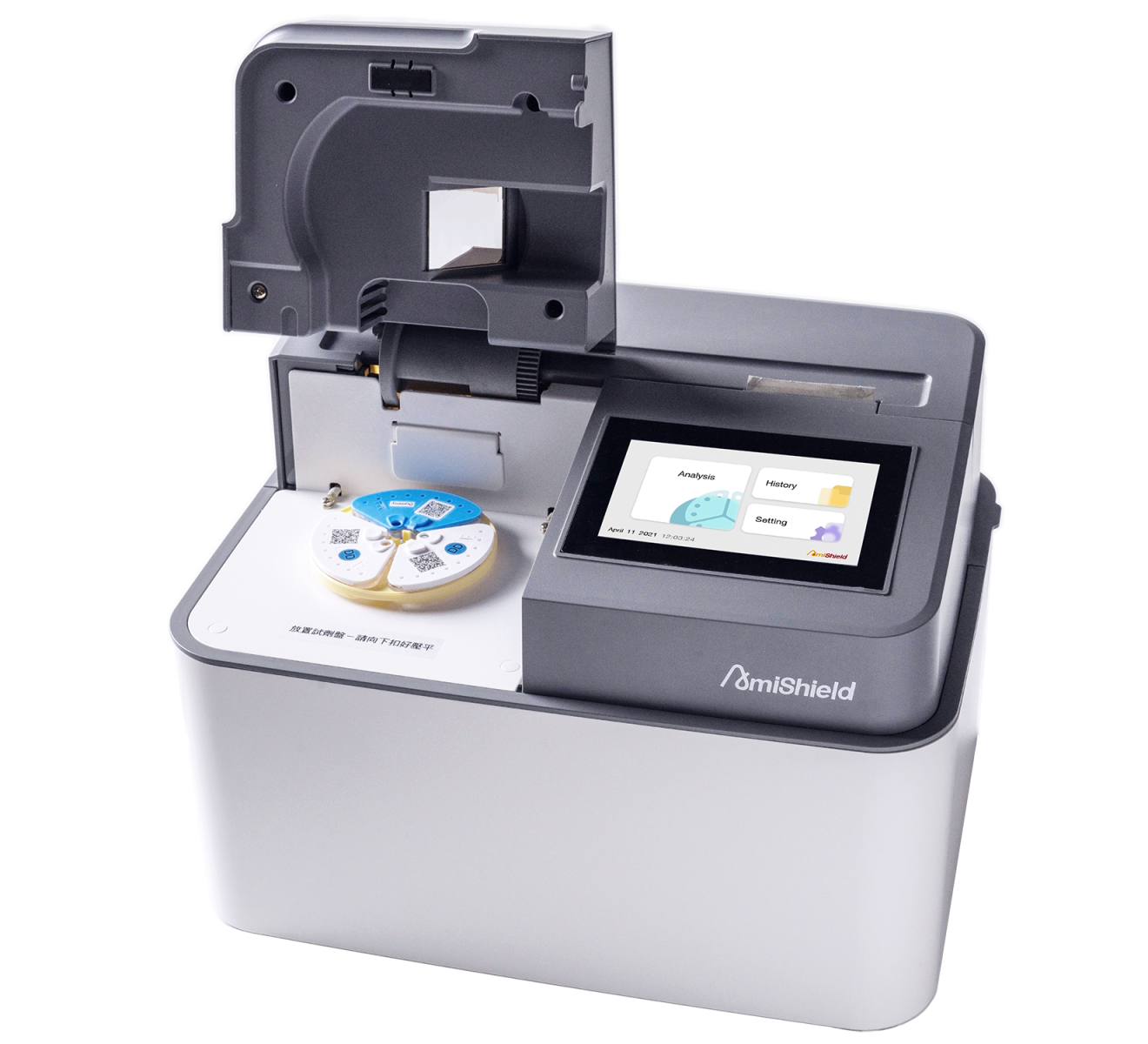 |
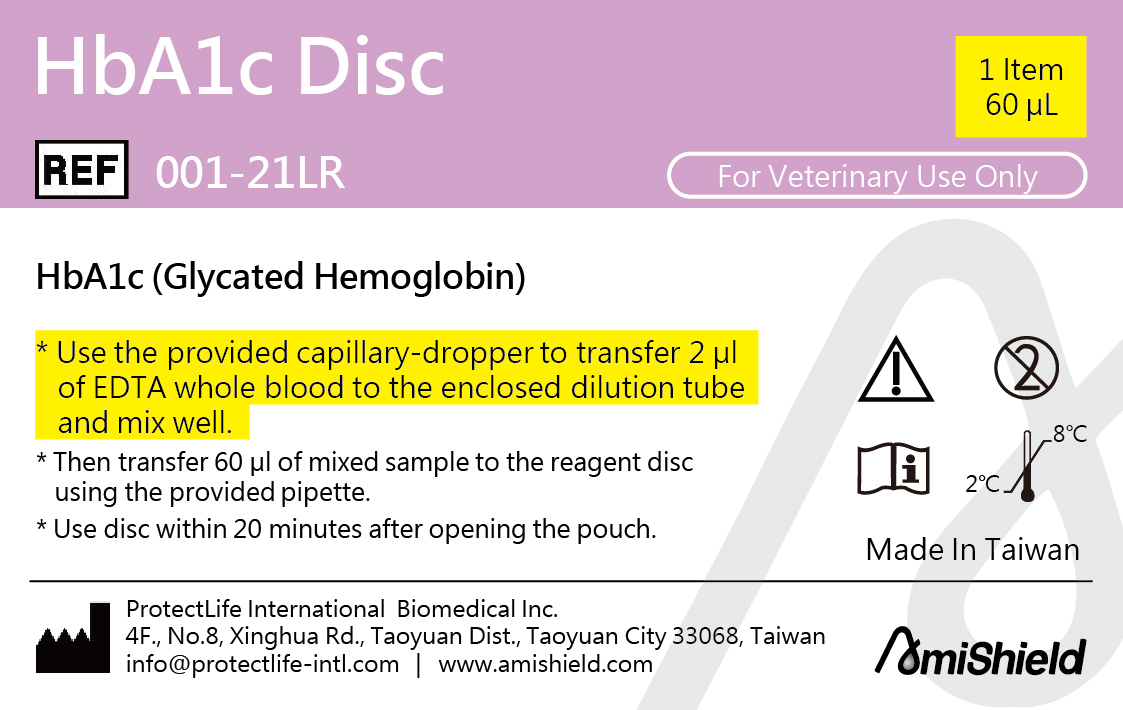 |
Test Result
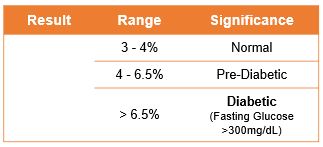
Normal: No risk for diabetes.
Pre-Diabetic: Canines are between health and diabetes, but they have not yet developed diabetes. Please follow the advice of veterinarians, improve
diet, exercise, reduce weight or supplement related health products, etc. These methods can avoid developing diabetes.
Diabetic: Diabetic canine (fasting blood glucose higher than 300 mg/dL) must be treated, take medicine, exercise and diet control, and regularly
detect the HbA1c value and evaluate the curative effect.
Treated diabetic canine:
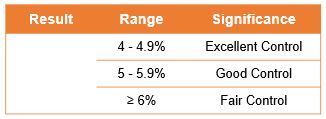
♦ References:
1. Braatvedt GD, Drury PL, Cundy T. Assessing glycaemic control in diabetes: relationships between fructosamine and HbA1C. N Z Med J. 1997 Dec 12;
110(1057):45962.
2. Loste A, Marca MC Fructosamine and glycated hemoglobin in the assessment of glycaemic control in dogs Vet. Res. 32 (2001) 55–62.
3. Elliott DA, Nelson RW, Reusch CE, Feldman EC, Neal LA. Comparison of serum fructosamine and blood glycosylated hemoglobin concentrations for
assessment of glycemic control in cats with diabetes mellitus. J Am Vet Med Assoc. 1999 Jun 15; 214(12):1794-8.





